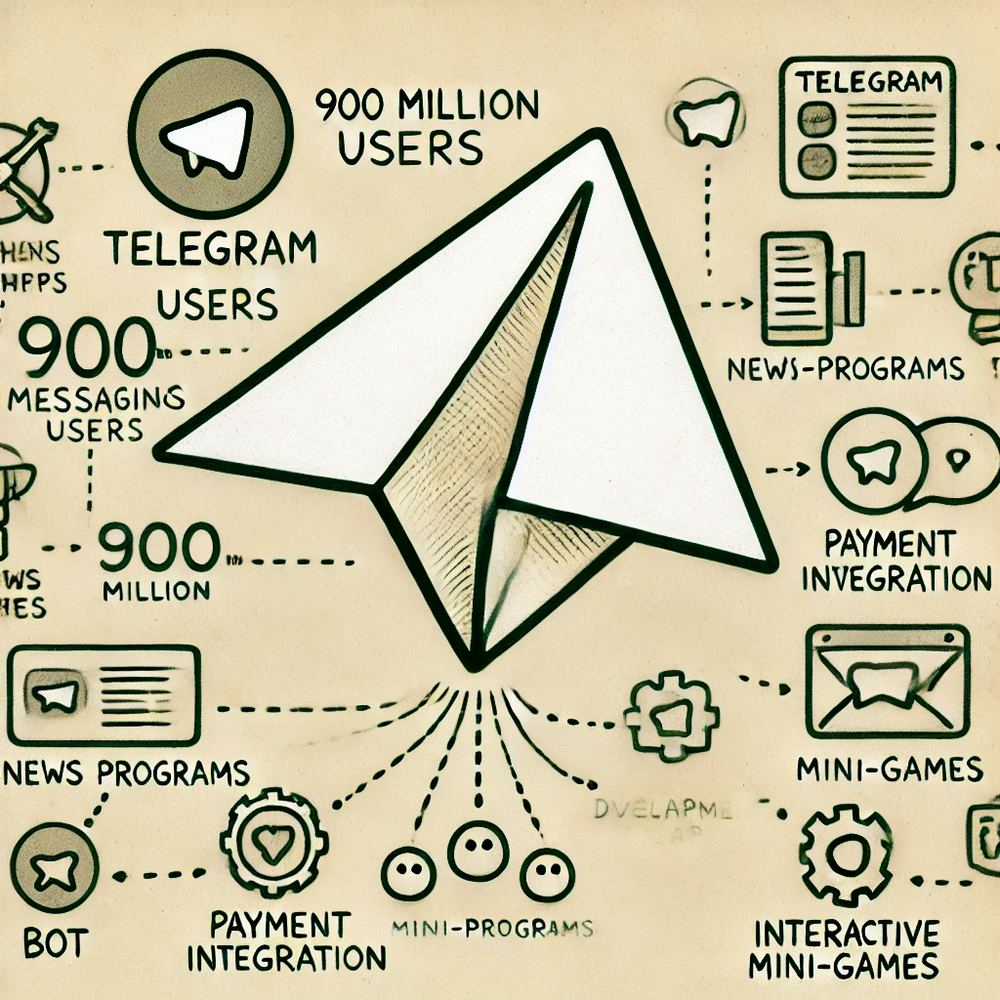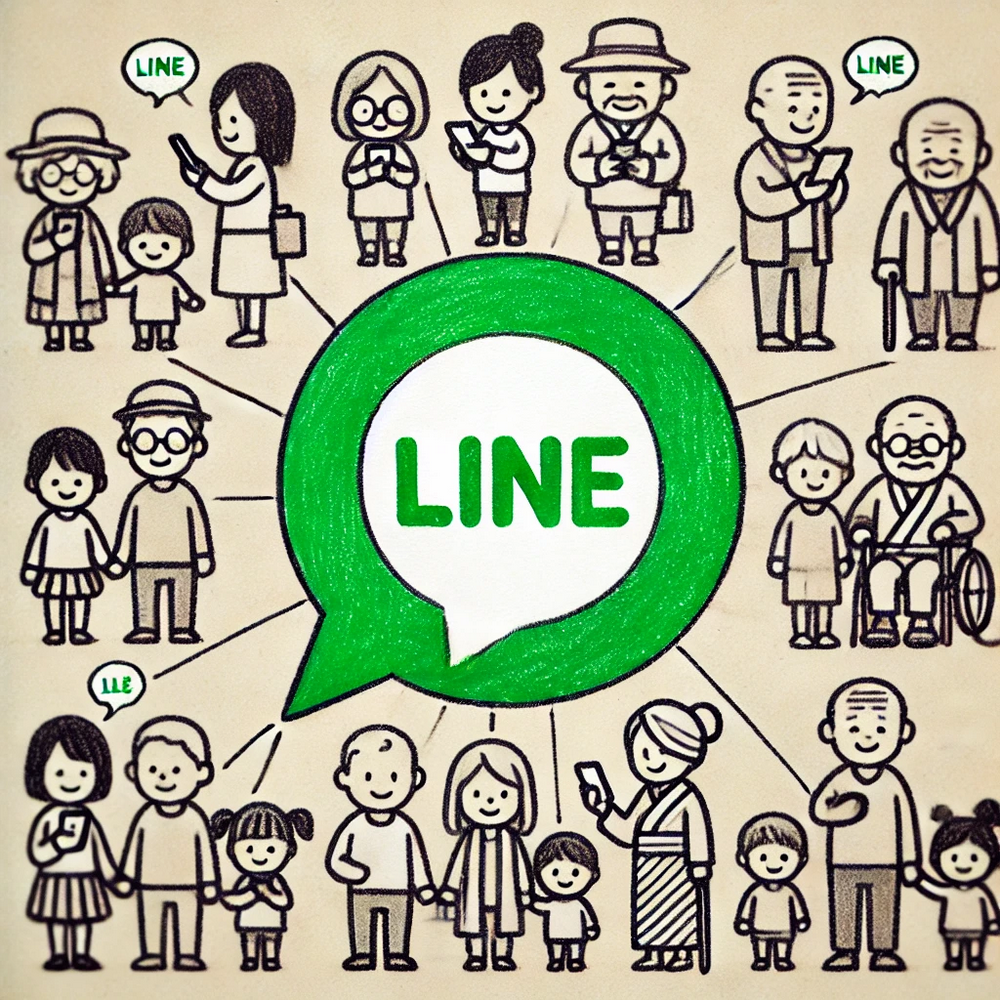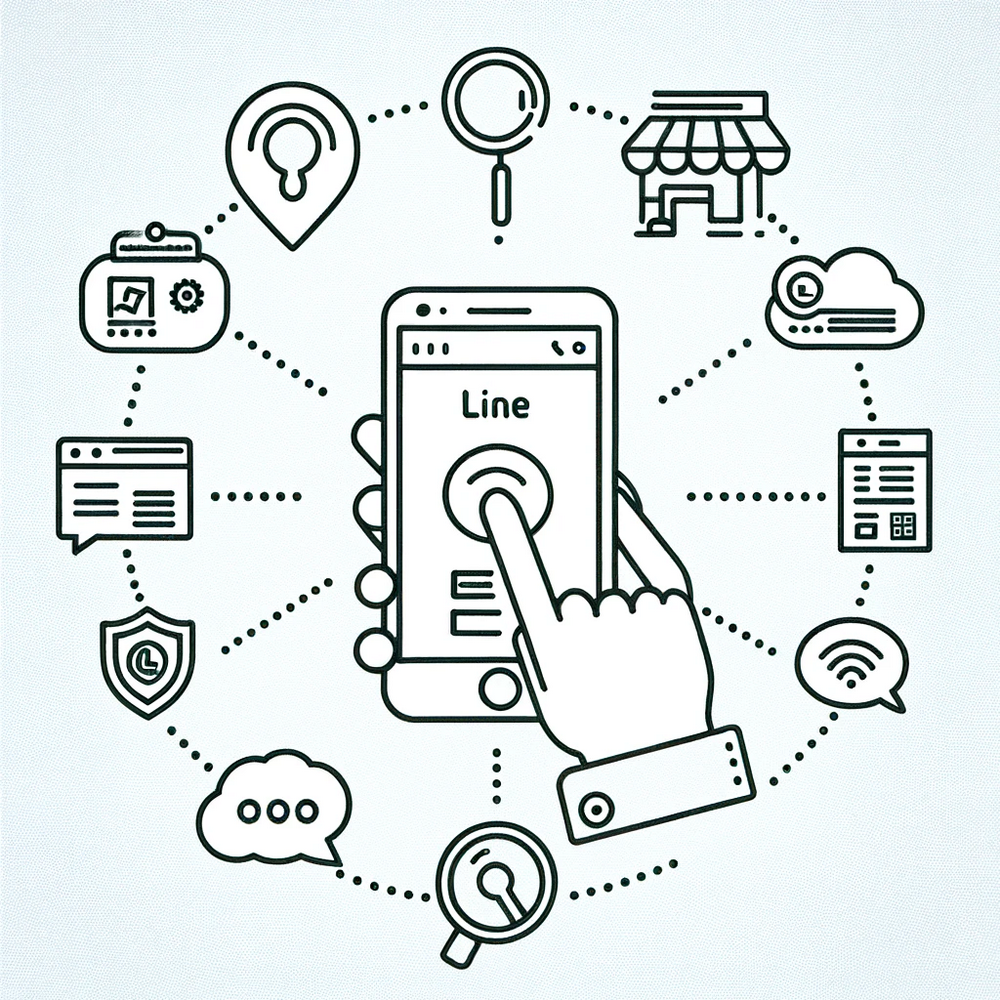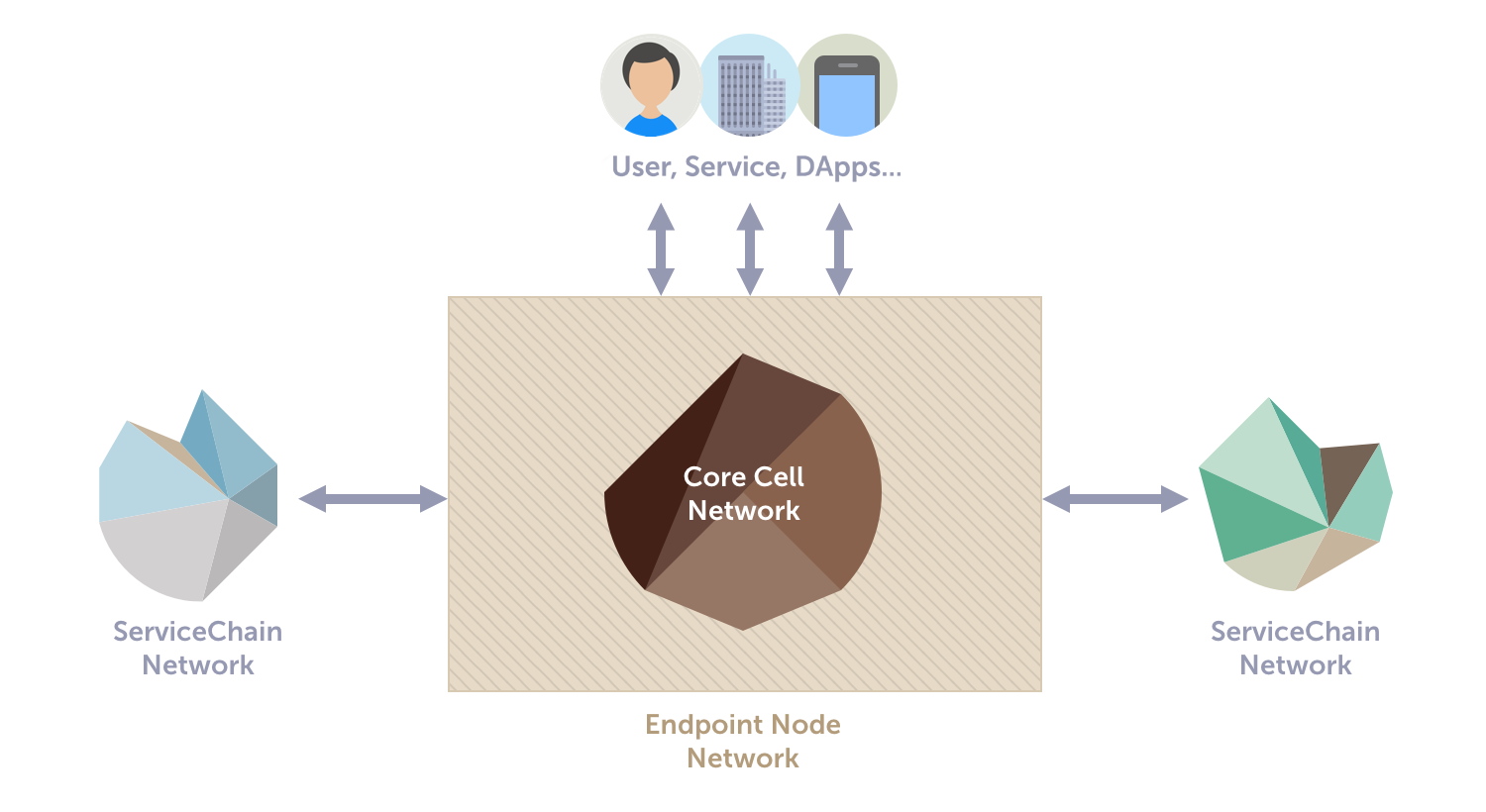Introduction
Line, a widely popular communication software in Asia, announced this year a mainnet merger with the Korean public blockchain Klaytn. This strategic move indicates that Line will actively expand its footprint in the Web3 space. Looking back at the rise of the Telegram ecosystem, it successfully attracted a large number of Web3 projects and users through its strong user base and mini-program platform, becoming a bridge for the transition from Web2 to Web3. Now, Line also possesses similar development conditions and is expected to spawn new Web3 phenomenon projects in the Asian market, injecting new vitality into the field.
The merger between Line and Klaytn will bring about technological innovation and changes in governance structure, issuing a new unified token and building an integrated network across Ethereum and Cosmos. This collaboration not only accelerates the development of Web3 technology but also signifies deep cooperation among Asian tech giants in the blockchain field, bringing more innovation and opportunities to the entire industry. Therefore, Line has the potential to become a new engine driving the development of Web3, continuing the success story of the Telegram ecosystem.
TG Ecosystem Review
Our previous article also mentioned the booming situation of the TG ecosystem in the middle of the year.
The rapid development of the TG ecosystem has not only attracted widespread attention in the Web3 field but has also injected new vitality into the entire industry with its unique advantages and innovative models. Among them, the successful listing of multiple projects, especially those listed on mainstream trading platforms like Binance with rapidly rising market values, has not only validated the commercial potential of the TG ecosystem but also attracted a large number of new users into the Web3 world.
The significant achievements of the TG ecosystem in the middle of the year can be attributed mainly to its large user base and efficient dissemination mechanism. Telegram itself, as a communication giant with 900 million users, provides a new service experience for users through its mini-program and bot development features. These mini-programs can completely replace most websites, support seamless authorization and integrated payments, and greatly enrich user interaction through customized features such as automatic news delivery, information services, and popular mini-games.

In addition, Telegram has developed the TON blockchain, which supports convenient blockchain transactions, further lowering the threshold for users to enter Web3. This model, similar to WeChat's "traffic + payment," has allowed Telegram to rapidly develop in the Web3 field, becoming a bridge connecting Web2 and Web3.
In this process, several projects within the TG ecosystem have performed particularly well. For example, gaming projects like NotCoin and Catizen have quickly attracted a large number of users through their simple operation methods and viral mechanisms, successfully guiding them to engage in on-chain interactions, thus achieving the transition from Web2 users to Web3 users. These projects have not only succeeded within the TG ecosystem but have also seen their market values soar after being listed on Binance, demonstrating their strong market appeal and commercial value.
Projects like Hamster Kombat have enhanced players' understanding and recognition of virtual currencies through their unique game backgrounds and management elements, while effectively driving traffic to their YouTube channels through a task system combined with video-watching tasks, further expanding the influence of the TG ecosystem.
The success of these projects has not only brought a wealth of fresh blood to the TG ecosystem but has also provided new ideas and models for the development of the Web3 field. They prove that through gamification and socialization, it is possible to effectively attract and convert Web2 users, while also showcasing the application potential of blockchain technology in non-financial fields such as gaming and social interaction.
As the TG ecosystem continues to mature and improve, more application scenarios and business models will be explored and realized in the future. From the current development trend, the TG ecosystem is expected to continue deepening in the gaming and social fields, and may further expand into finance, education, business, and other areas, ultimately forming a diversified and open Web3 ecosystem. With the addition of more innovative projects and the participation of more users, the TG ecosystem is likely to become an important force driving the development of the Web3 industry.
Introduction to Line
LINE is not only a popular communication software in Asia but is also the most popular messaging application in Japan, boasting 95 million monthly active users as of 2024, covering over 68% of Japan's total population. The main features of this app are similar to WhatsApp, providing messaging and calling services, while it also has many other unique features, such as stickers. Popular anime, celebrities, and creators even sell their paid stickers within the app. Businesses can set up official accounts on LINE, and some even sell their stickers to support marketing activities.
LINE also has a status update feature, including a function similar to Instagram Stories and a seamless sharing button. Additionally, the app features a cashless payment function called "LINE Pay," allowing users to transfer money to each other and make payments in stores.
From 58 million monthly active users in 2015 to 95 million in 2024, LINE's user base has significantly increased. Among active users, the reachable ratio through advertising is 52.5% male and 47.5% female. The age distribution ranges from 8.3% for those aged 15 to 19 to 31.4% for those aged 50 and above, which is quite representative of the Japanese population.
In Japan, LINE is not just a tool for young people. It is widely used by people of all ages and has become an important communication mechanism connecting friends, family, and colleagues.

A unique feature of LINE is that over 3 million LINE accounts are owned by companies in Japan. If you want to set up a business account on the app, you need to fill out a registration form and submit an application. Once approved, you can start using it. As the number of business accounts continues to grow in Japan, it provides an alternative to other marketing tools like email communication, offering many advantages to businesses. It is free to use, and companies can send sales coupons to customers through the app and even conduct surveys. Compared to email, it has a higher average open rate and click-through rate. This is why LINE is used by businesses of all sizes.
In 2020, Japan's Ministry of Health, Labour and Welfare (MHLW) reached an agreement with LINE to conduct a nationwide survey on COVID-19. The MHLW's official account regularly sends health survey questionnaires to all LINE users.
Today, LINE has become one of the most useful brand tools in Japan. If you are considering creating your own official LINE account when collaborating with the Japanese market, we highly recommend you do so. If you need any assistance, please feel free to contact us.
Current Status of Line Mini App
LINE MINI App, as an innovative service on the LINE platform, has become an important tool for digital transformation for businesses, especially popular in Japan and Taiwan. It allows businesses to directly publish web services on the LINE platform, enabling users to enjoy convenient service experiences without downloading additional applications. Thanks to LINE's large user base, businesses can reach a vast potential customer group, and by integrating LINE Pay, users can complete payments directly within the app, greatly enhancing shopping convenience.
With the impact of the COVID-19 pandemic, consumers are increasingly turning to planned purchases, which requires businesses to adapt to this change through digital means. As a result, LINE MINI App has become a key tool for connecting online and offline (OMO), supporting common functions such as online ordering, reservations, and queue management, while also helping businesses improve service visibility and user engagement. Although the development of LINE MINI App has not yet been fully opened in Taiwan, certified partners can apply in advance, and once developed, it must pass LINE's review before being published.
Currently, LINE MINI App is widely used in industries such as dining, education, healthcare, beauty, and retail. By providing a convenient user experience and strong backend support, it helps businesses stand out in a competitive market. With continuous technological development and further market opening, LINE MINI App is expected to play a greater role in the future, especially in promoting online and offline integration.

Moreover, as the market's acceptance of LINE MINI App continues to rise, its numbers are growing rapidly. Some companies, like DOTZ, have launched no-code development platforms such as "Mini App Maker," further lowering the technical threshold, allowing more small and medium-sized enterprises to easily create and manage their own LINE MINI App. It is expected that in the future, LINE MINI App will play a greater role in e-commerce and online services, potentially driving LINE to become a super app that provides users with comprehensive life services. This trend not only offers businesses a new customer touchpoint but also brings consumers a richer and more convenient service experience.
Introduction to the Korean Public Blockchain Klaytn
Klaytn is a blockchain platform launched by GroundX, a subsidiary of the South Korean internet giant Kakao, aimed at promoting the widespread adoption of blockchain technology through its high performance, scalability, and reliability. Klaytn adopts a Proof of Stake (PoS) consensus mechanism, which not only accelerates transaction speed and confirmation time but also maintains the efficient operation of the system.
One of Klaytn's main features is its integration of the advantages of public and private blockchains, providing an environment that is both efficient and secure. This unique combination allows Klaytn to support a large number of transactions and users while maintaining low processing times and costs, which is crucial for commercial applications that require handling high-frequency, large-scale transactions. Additionally, Klaytn supports smart contracts, enabling developers to build various decentralized applications (dApps) on the platform, commonly referred to as BApps (Blockchain Applications), to meet the needs of different industries and application scenarios.
Klaytn provides an accessible, user-friendly development environment, making it easy for even newcomers to blockchain technology to build and deploy blockchain applications. Through a platform similar to web services, Klaytn simplifies the process of creating new blockchain environments, reducing the technical burden on developers. This design philosophy is particularly appealing to developers transitioning from centralized applications to decentralized applications, as it lowers the entry barrier and accelerates the realization of innovative applications.
Klaytn's native cryptocurrency is KLAY, which plays multiple roles within the system. As a payment method, KLAY is used in applications built on Klaytn, and it is also distributed as rewards to developers who contribute to the platform. Additionally, KLAY is a popular choice among cryptocurrency traders and investors, who trade it to profit from market price fluctuations.
Klaytn's development journey has reached an important milestone with the merger with Finschia, leading to the birth of the new mainnet, Kaia. Kaia combines the technological advantages of Klaytn and Finschia, aiming to create the largest Web3 ecosystem in Asia. The native token of the new mainnet, KAIA, not only symbolizes the union of Klaytn and Finschia but also represents a commitment to partners and the community, intending to gather developers, businesses, users, and traders in a unified ecosystem.
The launch of Kaia heralds the rise of a network centered on collaboration, innovation, and users, simplifying the user experience and promoting the widespread adoption and application of blockchain technology globally. Kaia's vision is to make blockchain technology easy to use and accessible to everyone, regardless of their background or experience. This vision is guided by its core values—community, sustainability, and simplicity—serving as guiding stars for Kaia in nurturing partnerships, engaging deeply with the community, and driving blockchain adoption.

Kaia's network structure is divided into three logical subnets:
Ⅰ Core Unit Network (CCN): Composed of core units (CC) responsible for transaction validation, execution, and block creation.
Ⅱ Endpoint Node Network (ENN): Composed of endpoint nodes (EN) that handle RPC API requests and process service chain data.
Ⅲ Service Chain Network (SCN): Composed of auxiliary blockchains independently operated by dApps, connected to the main chain through EN.
Image Source: https://docs.kaia.io/learn/ Kaia Overview
Merger of Line and Klaytn's Public Chains
The merger of Klaytn and LINE's public chain Finschia has created a new blockchain ecosystem—Kaia. This merger marks a deep collaboration between two major Asian tech giants, Kakao and LINE, aimed at promoting the development and application of Web3 technology.
Background
Klaytn is a blockchain platform launched by the South Korean internet giant Kakao, designed to provide a high-performance, scalable, and secure blockchain environment. Finschia, on the other hand, is a blockchain platform launched by LINE, inheriting the vision of LINE's blockchain and committed to promoting the adoption of public blockchains and Web3 technology. The merger of the two platforms represents not only a technological integration but also a strategic deep collaboration aimed at building Asia's leading Web3 ecosystem.
Advantages of the Merger
Technological Integration: Kaia combines the technological advantages of Klaytn and Finschia, providing a high-performance blockchain network. It supports EVM (Ethereum Virtual Machine) and CosmWasm, enabling developers to build applications on a platform compatible with various blockchain technologies.
User Base: The merged Kaia will integrate the advantages of Klaytn with KakaoTalk and Finschia with LINE, meaning Kaia will have a potential user base of over 250 million, providing a vast user foundation for blockchain applications.
Ecosystem Expansion: Kaia will promote ecosystem expansion in collaboration with partners in Japan, South Korea, and Southeast Asia in the areas of real-world asset tokenization (RWA), GameFi, and DeFi, further enriching Kaia's ecosystem and attracting more developers and projects to join.
Governance Structure: Kaia plans to expand its governance structure to include 100 leading global enterprises, achieving permissionless validation and enhancing the decentralization and security of the system.
Impact of the Merger
The merged Kaia is expected to have a profound impact on the Web3 industry. It will not only bring new vitality to the blockchain field in Asia but may also become a focal point for the global blockchain community. The launch of Kaia signifies the rise of a network centered on collaboration, innovation, and users, simplifying the user experience and promoting the widespread adoption and application of blockchain technology globally.
Additionally, Kaia's governance model optimization and support for AI-driven dApp discovery and promotion will make Kaia an important bridge connecting traditional enterprises and modern blockchain technology. The success of Kaia will depend on the competitiveness of its technology and ecosystem, as well as its influence on the global Web3 stage.
Overall, the merger of Klaytn and Finschia, along with the launch of the new mainnet Kaia, represents an important milestone in the development of blockchain technology in Asia, bringing new value and opportunities to the Web3 industry. As Kaia continues to develop and mature, we have reason to expect it will play an increasingly important role in the blockchain field.
Outlook
With the successful merger of Klaytn and Finschia, the birth of the new mainnet Kaia brings new vitality and innovation to the Web3 industry. Kaia's vision is to promote the adoption and application of blockchain technology by providing an inclusive, accessible, and technologically advanced platform. Looking ahead, Kaia is expected to become an important force in the blockchain field in Asia and even globally, with its development having a profound impact on the entire Web3 ecosystem.
Kaia has immense development potential; it will not only provide developers with powerful tools and resources to build and deploy innovative blockchain applications but also offer users a richer and more convenient service experience. As more DeFi projects, GameFi applications, and other Web3 services join, Kaia's ecosystem will become more diverse and vibrant. Furthermore, Kaia's support for AI-driven dApp discovery and promotion will further foster innovation and user engagement on the platform.
Kaia's global expansion plan, including collaborations with top gaming companies in multiple Asian countries and Web3 projects with globally recognized IPs, indicates that it will provide an unprecedented collaboration platform for developers, innovators, and users. The optimization of Kaia's governance structure and the implementation of permissionless validation will enhance the network's decentralization, improve the system's openness and security, and provide a fairer and more transparent environment for the global blockchain community.
In summary, the future development of Kaia is full of expectations. It will not only inject new momentum into the development of blockchain technology in Asia but may also lead the global Web3 industry into a new era. With continuous technological advancements and the increasing maturity of the ecosystem, Kaia is expected to become an important bridge connecting traditional internet and emerging blockchain technology, providing global users with a secure, convenient, and rich digital communication and financial service platform.
免责声明:本文章仅代表作者个人观点,不代表本平台的立场和观点。本文章仅供信息分享,不构成对任何人的任何投资建议。用户与作者之间的任何争议,与本平台无关。如网页中刊载的文章或图片涉及侵权,请提供相关的权利证明和身份证明发送邮件到support@aicoin.com,本平台相关工作人员将会进行核查。




